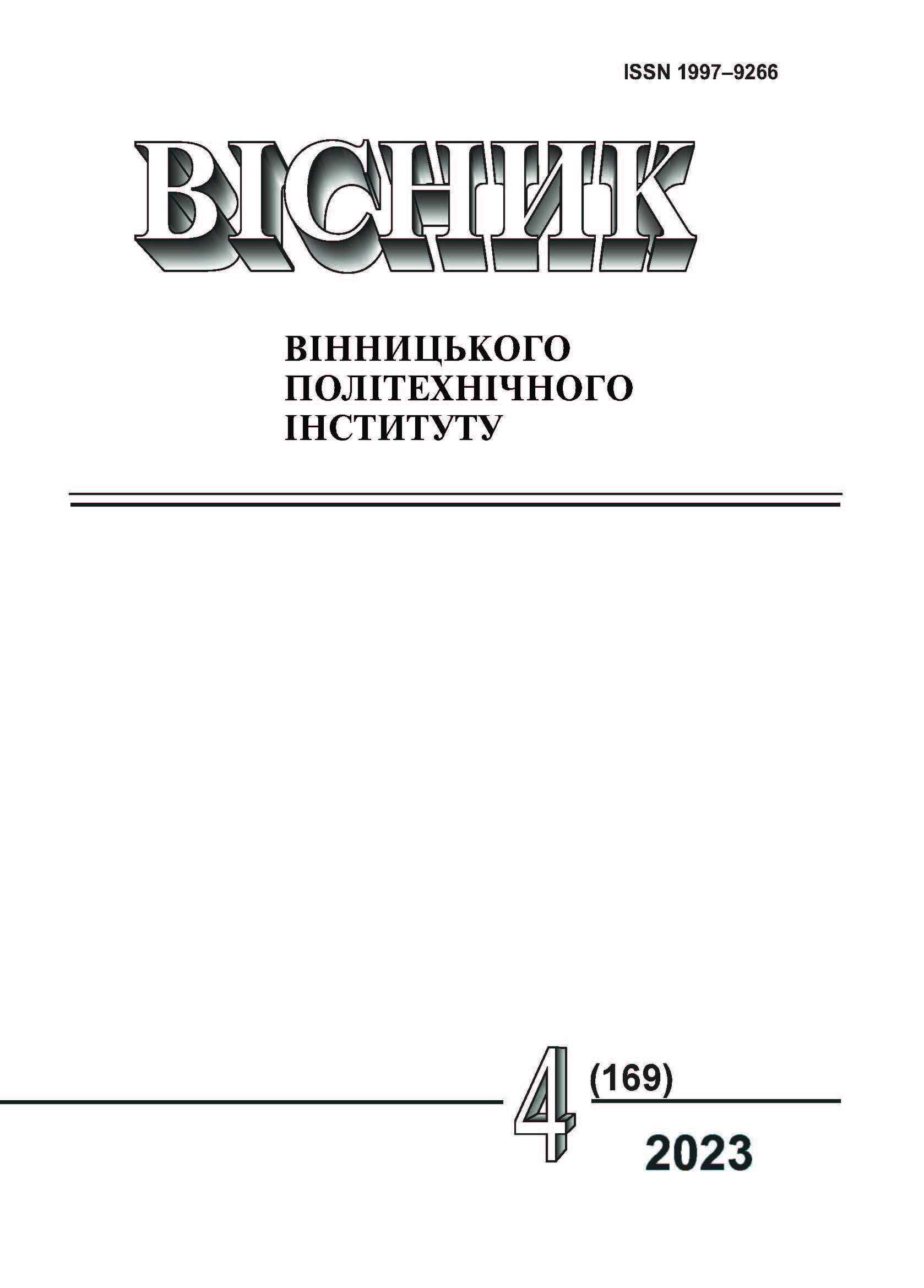Correlation Functions Application Effect on Periodic Pulse Signal with Harmonic Elements
DOI:
https://doi.org/10.31649/1997-9266-2023-169-4-46-53Keywords:
correlation functions, discrete signal, periodic pulse signal, signal processingAbstract
Discrete signal processing is a core function for most low-level processes in digital elements of computer systems. Typical task of such processing is allocation of informative components, reduction of the impact of noise and distortions caused by various factors, and nonlinearity compensation of sensors and hardware components characteristics of digital computer systems, etc.
Within the limits of this article characteristic features of correlation processing of periodic pulse signals with harmonic components was reviewed, experiment regarding the effectiveness of their detection in case of presence of additive effects of noise was carried out . Aspects of reference fragments formation , based on the experimentally obtained set of signals are considered . Conducted research includes development of the algorithm for the allocation of the typical fragments from the set of signals , formation of the template, based on the known mathematical tools . The processes, algorithms, and analytical expressions used for the formation of the reference signals, research and evaluation of the effectiveness of signal processing are provided.
Main criterion for the comparison of the efficiency of usage of various correlation functions was selected the change of the assessment of signal energy to noise energy ratio for the input signals and their correlation signals. The research results show the impact of the algorithms of reference signal formation, and changing the number of pre-allocated signal fragments on correlation functions in case processing of discrete periodic pulse signals with harmonic components.
References
J. Chen, J. Benesty, Y. Huang, and S. Doclo, “New insights into the noise reduction Wiener filter,” IEEE Transactions on Audio, Speech, and Language Processing, vol. 14, no. 4, pp. 1218-1234, June. 2006. https://doi.org/10.1109/TSA.2005.860851 .
H. C. Stronks, J. J. Briaire, and J. H. M. Frijns, “Beam forming and Single-Microphone Noise Reduction: Effects on Signal-to-Noise Ratio and Speech Recognition of Bimodal Cochlear Implant Users,” Trends in Hearing, vol.26, January-December. 2022. https://doi.org/10.1177/23312165221112762 .
G. Huang, J. Benesty, T. Long, and J. Chen, “A Family of Maximum SNR Filters for Noise Reduction,” IEEE/ACM Transactions on Audio, Speech, and Language Processing, vol. 22, no. 12, pp. 2034-1234, September. 2014. https://doi.org/10.1109/TASLP.2014.2360643 .
J. G. Proakis, and D. G. Manolakis, Digital signal processing. Principles, Algorithms, and Applications. Third edition. Upper Saddle River, New Jersey: Prentice-Hall, Inc., 1996.
C. Lin, C. Huang, W. Yang, A. K. Singh, C. Chuang, and Y. Wang, “Real-Time EEG Signal Enhancement Using Canonical Correlation Analysis and Gaussian Mixture Clustering,” Journal of Healthcare Engineering, vol. 2018, Jan. 2018. https://doi.org/10.1155/2018/5081258 .
M. Zhang, and G. Wei, “An Instantaneous Correlation Coefficient and Simplified Coherent Averaging Method for Single-Channel Foetal ECG Extraction,” Applied Sciences, vol. 10, no. 16: 5634, August. 2020. http://dx.doi.org/10.3390/app10165634 .
S. Hong, J. Heo, and K. S. Park, “Signal Quality Index Based on Template Cross-Correlation in Multimodal Biosignal Chair for Smart Healthcare,” IEEE Transactions on Audio, Speech, and Language Processing, vol. 21, no. 22: 7564, November. 2021. https://doi.org/10.3390/s21227564 .
M. Borga, Canonical Correlation: A Tutorial, 2001. [Electronic resource]. Available: https://www.cs.cmu.edu/~tom/10701_sp11/slides/CCA_tutorial.pdf . Accessed on: July 18, 2023.
Н. Г. Ширмовська, І. Б. Албанський, І. Р. Пітух, і О. Л. Кулинин, «Застосування кореляційного та кластерного аналізу для ідентифікації передаварійних та аварійних станів процесів буріння,» Науковий вісник Івано-Франківського національного технічного університету нафти і газу, № 3(29), с. 111-118, 2011.
А. І. Сегін, «Перспективи побудови кореляційних моделей в полярній системі координат,» Штучний інтелект, № 43, с. 105-114. 2009.
Ю. О. Кулаков, В. Ю. Куц, «Оцінка співвідношення сигнал/шум в функціонально-орієнтованих системах аналізу циклічних сигналів,» Вісник Вінницького політехнічного інституту, № 57, с. 65-69, 2012.
Downloads
-
PDF (Українська)
Downloads: 71
Published
How to Cite
Issue
Section
License

This work is licensed under a Creative Commons Attribution 4.0 International License.
Authors who publish with this journal agree to the following terms:
- Authors retain copyright and grant the journal right of first publication.
- Authors are able to enter into separate, additional contractual arrangements for the non-exclusive distribution of the journal's published version of the work (e.g., post it to an institutional repository or publish it in a book), with an acknowledgment of its initial publication in this journal.
- Authors are permitted and encouraged to post their work online (e.g., in institutional repositories or on their website) prior to and during the submission process, as it can lead to productive exchanges, as well as earlier and greater citation of published work (See The Effect of Open Access).





